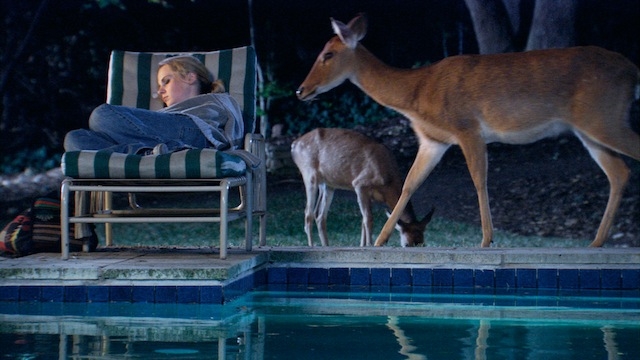ArtReview sent a questionnaire to artists and curators exhibiting in and curating the various national pavilions of the 2017 Venice Biennale, the responses to which will be published daily in the lead-up to the Venice Biennale opening (13 May – 26 November).
Philipp Kaiser is co-curating the Swiss pavilion, which is located in the Giardini.
What can you tell us about your exhibition plans for Venice?
The exhibition Women of Venice refers to the little known absence of Alberto Giacometti at the Biennale di Venezia. The Pavilion of Switzerland, which was built in 1952 by Alberto’s brother, the renowned architect Bruno Giacometti, will feature new work by Teresa Hubbard / Alexander Birchler and Carol Bove created specifically for the occasion in reference to the legacy and universe of Alberto Giacometti. Teresa Hubbard and Alexander Birchler will present a film installation based on their research on the largely unknown American artist Flora Mayo, who studied in Paris in the 1920s and was a lover of Giacometti’s. The film weaves together fictional and documentary material to both reconstruct and reimagine her life and work. Carol Bove will create a new group of sculptures referring to Giacometti’s late figurative work, tracing the relational forces and theatrical qualities between the figures.
I am happy that the artists enthusiastically engaged with the historical framework and are transforming these ideas into something uniquely their own.
How is making a show for the Venice Biennale different to preparing a ‘normal’ exhibition? Or another biennial?
The cultural politics behind the nation-based structure of the Biennale are such an important part of its history and its continued presence in the art world. Every country wants to send its best artists, as these choices reflect on people’s ideas of their national identity. I was interested in conceiving a project for the Swiss pavilion that takes the specificity of its cultural and architectural context as a starting point.
There are a huge number of biennial exhibitions across the world nowadays. Do you think the Venice Biennale still has a special status, and why?
The Venice Biennale is special because it’s been around since 1895. It’s the historical predecessor of all the other biennales that currently exist and it is still relevant, no question.
What does it mean to ‘represent’ your country? Do you find it an honour or is it problematic?
It’s an honour to have been chosen as the first curator to develop a project for the Swiss pavilion. Since I’ve lived abroad for more than ten years, it’s been a great way to reconnect.
The Venice audience is a diverse group. Who is most important to you? The artist peers, the gallerists, curators and critics concentrated around the opening, or the general public which visits in the months that follow?
The diversity of the audience of the Biennale is a strength; it’s an opportunity to reach audiences that might not otherwise see the work. But I was more interested in realising something relevant and specific to the context of the Venice Biennale than in conceiving a show for a specific audience. I wanted to use this opportunity to do something special that could only be done at the Swiss pavilion.
Did you visit the last Venice Biennale? What’s your earliest or best memory from Venice?
I visited all the Venice Biennales since 1995. One of my fondest memories was the Belgian pavilion, which housed Luc Tuymans’s show Mwana Kitoko: Beautiful White Man. I also distinctly remember Thomas Hirschhorn’s 2011 takeover of the Swiss pavilion, but also Isa Genzken and many more.
How does having a pavilion in Venice make a difference to the art scene in your home country?
It might not necessarily make a difference for the country but of course as a visitor you are always aware who the country is focusing on every two years. Every pavilion has its own history and features depending on its political and representational circumstances of the moment their best artist or interest. In this sense the Biennale is definitely an interesting place to learn more about national representation.
You’ll no doubt be very busy, but what else are you looking forward to seeing?
I’m looking forward to seeing Anne Imhof’s work in the German pavilion, and Phyllida Barlow in the British pavilion. I’m also looking forward to seeing the realisation of Christine Macel’s organisational efforts on the entire Biennale presentation.
Click here to read all the Venice Questionnaires so far
21 April 2017
